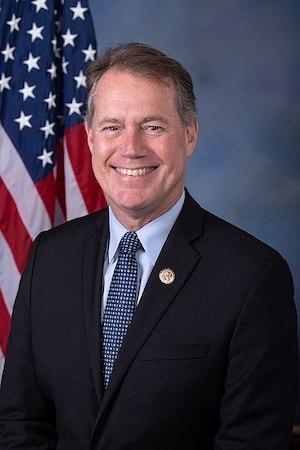Measure Targets Increasing Safety And Disruption Concerns In Wake Of Recent Fatal Accidents
The late Will Rogers once intoned that, "Be thankful we're not getting all the government we're paying for...." and in the case of some truly anti-aviation rhetoric from yet another instant Congressional expert, what we are getting from the government still seems like way too much, indeed.
U.S. Congressman Ed Case (D-HI) has announced that he will introduce a measure in the U.S. House of Representatives to impose strict regulations on commercial tour operations to include helicopters and small planes.

Case’s proposed “Safe and Quiet Skies Act” would direct the FAA, which has virtually exclusive jurisdiction over such aircraft, to adopt tighter safety recommendations long advanced by the NTSB.
“In just the last few months Hawai’i has seen three dead in the crash of a commercial air tour helicopter into a residential neighborhood and eleven more dead in the crash of a commercial skydiving plane,” said Case (pictured) in a letter to his House colleagues inviting their support.
“Following these recent tragedies in Kailua and at Dillingham Air Field, which are not isolated instances nationally, the NTSB, which is responsible for investigating accidents but not for direct safety regulation, strongly suggested to the FAA that safety-related regulation of commercial tour helicopters and small aircraft skydiving operations is generally insufficient. Clearly the FAA should now follow the NTSB’s lead before any more lives are lost.”
“These tragedies occurred amidst a rapid increase in commercial helicopter and small plane overflights of all parts of Hawai’i including residential, commercial and industrial neighborhoods, cemeteries and memorials, land and marine parks and other recreation areas, and sensitive military installations. These have disrupted whole communities with excessive noise and other impacts, destroyed the peace and sanctity of special places, increased risk to not only passengers but those on the ground, and weakened security and management of defense operations.”
“This current situation is not acceptable for both safety and community impact concerns. Regarding ground disruption and risk, the FAA takes the position that its responsibility is strictly operational safety and national airspace efficiency and does not extend to ground disruption and other negative impacts.
“As a result, the operators, aside from strict takeoff and approach, avoidance of established flight paths and other limited circumstances, are virtually free to fly wherever, whenever and as often as they want. And they do, with little to no self-regulation.
“My Safe and Quiet Skies Act will further mandate strict regulation of commercial air tour operations to address defense risks and community disruption, including no overflights of defense, park, cemetery, and other sensitive installations and minimum altitude maximum noise limits on all flights. Additionally, it will allow states, localities, and tribes to impose stricter regulations on tour flights in their jurisdictions, to include time, route and frequency, with required public engagement.”
The “Safe and Quiet Skies Act” specifics would:
- Require that tour flights fly above the 1,500-foot altitude over actual ground at all times with very limited exceptions for emergencies and takeoff/landing
- Require tour flights over occupied areas (including residential, commercial and recreational areas) to be no louder than 55 dbA, the same level of noise commonly allowed for residential areas
- Allow states and localities to impose additional requirements – stricter than the minimum national requirements called for in the act – on tour flights
- Require that all regulations under this Act, in addition to any updates to any Air Tours Common Procedure Manuals (voluntary understandings between operators and the FAA), include public engagement
- Prohibit tour flights over military installations, national cemeteries, national wilderness areas, national parks, and national wildlife refuges;
- Apply the “sterile cockpit rule” to tour flights, which requires that pilots only focus on safely operating the aircraft and would define tour-giving and narrating as outside of the duties required for safe operation
- Require FAA to implement NTSB recommendations regarding Part 135 regulations, which most tour flights fly under
- Require all tour flights to fly under Part 135 regulations and prohibit tour flights from flying under less restrictive Part 91 regulations.
(Source: Representative Ed Case news release)
 Airborne-Flight Training 05.09.24: ERAU at AIAA, LIFT Diamond Buy, Epic A&P
Airborne-Flight Training 05.09.24: ERAU at AIAA, LIFT Diamond Buy, Epic A&P ANN's Daily Aero-Term (05.07.24): Hazardous Weather Information
ANN's Daily Aero-Term (05.07.24): Hazardous Weather Information Aero-News: Quote of the Day (05.07.24)
Aero-News: Quote of the Day (05.07.24) NTSB Final Report: Cessna 150
NTSB Final Report: Cessna 150 Aero-News: Quote of the Day (05.08.24)
Aero-News: Quote of the Day (05.08.24)



